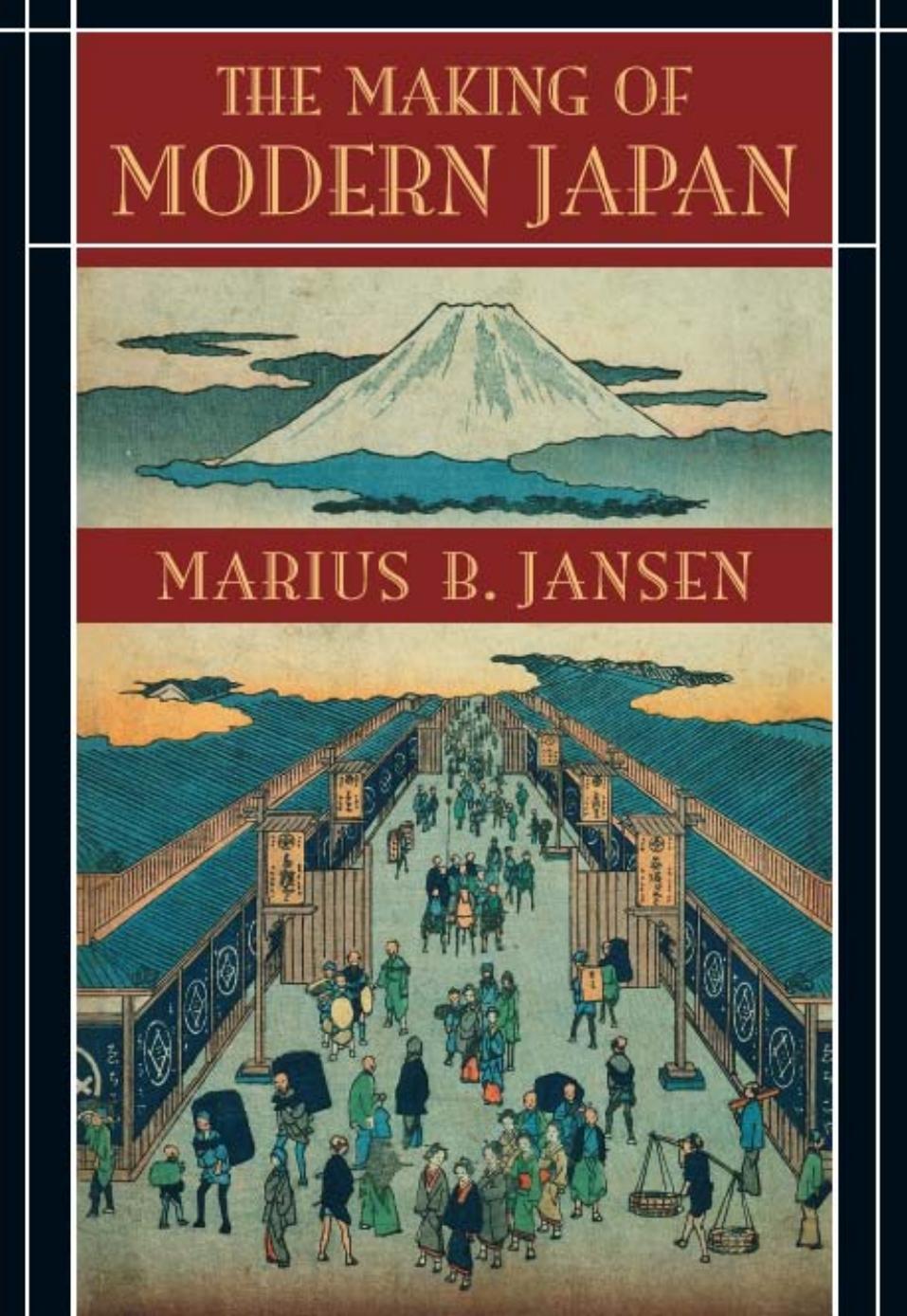The Making of Modern Japan by Marius B. Jansen

Author:Marius B. Jansen [Jansen, Marius B.]
Language: eng
Format: epub, pdf
Published: 2002-09-30T12:35:15+00:00
446
The Making of Modern Japan
6. The Meiji Empire, 1910. Japan secured possession of the Kurils in 1875, asserted full control over Ryukyu in 1879, acquired Taiwan after the Sino-Japanese War in
1895, obtained the south Manchurian leasehold in 1905, and annexed Korea in
1910.
Imperial Japan
447
pleasing to Japanese that diplomats assigned to Tokyo now had the rank of
ambassador while those accredited to China remained ministers. All foreign
representatives had left Korea.
New problems replaced the old. The growth of continental responsibility
brought with it heavy defense expenditures. The circle of “interest” that Yama-
gata had extended to Korea two decades earlier grew ever larger, and the Impe-
rial Army and Navy required larger budgets. Yesterday’s friend could be to-
morrow’s foe. Heavy industry began with iron- and steelworks funded by the
Chinese indemnity; industry and imperial growth fed upon each other. Japan
began to build its own ships. An enlarging merchant marine related to exports,
and a new navy was required by the development of the dreadnought, which
suddenly rendered previous warships obsolete. Japan entered this new compe-
tition as a near equal with its rivals. Future Diet debates would continue to
be focused on the degree and allocation of assessments for more divisions
and more battleships.
The early twentieth century brought a new balance between rural and
urban Japan, for the distribution of population was changing rapidly. Early
post-Restoration estimates indicate a population of 35 million in 1873. By 1891
the count stood at 41 million, and in 1913 it was 52 million. With better fertiliz-
ers and strains of rice agriculture grew more productive, but by 1900 some
sort of ceiling had been reached and Japan began to import food. Theretofore
much of the government revenue had come from agriculture, but as men-
tioned earlier, after 1900 the balance shifted as consumption, income, busi-
ness, and commerce taxes carried the load. The population growth was to a
large degree in cities. New commercial and industrial cities were arranged
along the Pacific coast that Tokugawa daimyo had traveled on their trips to
Edo; Kobe, Osaka, Nagoya, Yokohama, and Tokyo were the centers.
Japan’s electorate, however, remained disproportionately rural. Since the
franchise had been extended to property-owning taxpayers with a minimum
of 15 yen tax annually, landlords and established farmers provided the bulk
of the votes, and this remained the case even when the tax qualification was
lowered to 10 yen in 1900.
The growth of population and the need for foodstuffs naturally led to
talk of emigration. For many years it was thought that Korea was relatively
underpopulated and would be able to support many settlers, and hopes were
also high for Taiwan. Enthusiasts wrote of this as a natural form of national
expansion. The bulk of emigrants, however, were attracted by the dream of
land and wealth in Hawaii and the United States. Until well after the Russo-
Japanese War the United States and its possessions attracted the largest num-
ber of overseas Japanese, more even than Taiwan and Korea. “The movement
448
The Making of Modern Japan
was sustained,” Iriye writes, “by the confident psychology of expansionism
and by an image of that country as Japan’s friend.”32 After the victory over
Russia confidence in Japanese expansion in all directions, westward as well
as eastward, was striking.
Download
The Making of Modern Japan by Marius B. Jansen.pdf
This site does not store any files on its server. We only index and link to content provided by other sites. Please contact the content providers to delete copyright contents if any and email us, we'll remove relevant links or contents immediately.
| Historic | Information Systems |
| Regional |
Man-made Catastrophes and Risk Information Concealment by Dmitry Chernov & Didier Sornette(5921)
The Revenge of Geography: What the Map Tells Us About Coming Conflicts and the Battle Against Fate by Kaplan Robert D(4034)
Zero Waste Home by Bea Johnson(3777)
COSMOS by Carl Sagan(3553)
Good by S. Walden(3485)
In a Sunburned Country by Bill Bryson(3481)
The Fate of Rome: Climate, Disease, and the End of an Empire (The Princeton History of the Ancient World) by Kyle Harper(3003)
A Wilder Time by William E. Glassley(2818)
Camino Island by John Grisham(2762)
The Ogre by Doug Scott(2631)
Organic Mushroom Farming and Mycoremediation by Tradd Cotter(2626)
Human Dynamics Research in Smart and Connected Communities by Shih-Lung Shaw & Daniel Sui(2465)
Energy Myths and Realities by Vaclav Smil(2437)
The Traveler's Gift by Andy Andrews(2409)
9781803241661-PYTHON FOR ARCGIS PRO by Unknown(2321)
Inside the Middle East by Avi Melamed(2305)
Birds of New Guinea by Pratt Thane K.; Beehler Bruce M.; Anderton John C(2223)
A History of Warfare by John Keegan(2184)
Ultimate Navigation Manual by Lyle Brotherton(2129)
